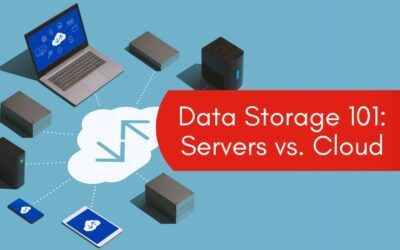Businesses are moving into the cloud and raving about the benefits. If you aren’t clear about what this means, you are not alone. While the idea has a long history with computer networking, it wasn’t until a Google CEO introduced the term at a 2006 conference that it took hold in the modern era. This date launched a service that has transformed how businesses operate. As you consider whether you want to utilize a cloud storage system model, there are a few factors you will want to read up on to help you make your decision.
LEARN THE TERMINOLOGY
Before you get started using cloud storage, you need to know the lingo. While there are certainly many more terms to learn, start with the basic idea of cloud storage. This word refers to a service where data is stored in a facility, often more than one, and is accessed remotely by the user.
With this in mind, a cloud service provider is a company that is providing said service. Another key term to know is cloud management platform, or CMP; this term refers to the actual product that gives you integrated management of your cloud environment. As you read more into the providers out there, you will become more comfortable with these terms and their meanings.
DIFFERENT TYPES OF CLOUD
As you start looking at the various cloud providers out there, you want to consider the different types available, including public, private, and hybrid. A public provider is a third-party vendor that provides the servers and services but requires you to manage the security. For example, Amazon Web Services, AWS, will protect the hardware portion of its servers, and you are responsible for your data’s security.
Alternatively, a private provider is one where you take over control of your servers and do not rely on anyone outside of your company. Finally, a hybrid system utilizes a combination of both public and private. As you look into hybrid cloud benefits, be sure to consider the advantages of all the types to choose the one that’s right for your company.
WHO ARE THE MAIN PROVIDERS?
Now that you have a basic idea of cloud storage, you need to know the key players in this rapidly growing industry. The top companies include Google Drive, OneDrive, Dropbox, and Box. However, it is also important to consider alternatives such as hybrid systems and storage as a service.
As you look at the industry leaders, check out what training they have available for you to use. Many of these providers offer free online courses to help you familiarize yourself with all of their services and update you on any upcoming rollouts. With this information, you can start narrowing down to which provider has the structure that will support your company now and into the future.
KEY FACTORS TO CHECK
As you start to make your final decision, there are a few key details you want to be clear on before you sign up for the service, the most pivotal being pricing. The cloud storage pricing model is not as cut and dry as saying $10 a gig. You can be charged for both the storage and activity in the cloud.
Additionally, services can vary greatly depending on your tier. When looking at the price lists, check for an asterisk that explains further what you will be paying for and what will not be included. Some of these costs are downloading or uploading your data. As you read up on the various pricing options, be sure to consider what your day-to-day needs are vs. your long-term needs. This information will help you focus on the package that is right for you.
Before you finalize your choice, review your options with your IT department. Discuss your company’s needs to ensure you pick the cloud storage model that meets your requirements. You want to match your current technical abilities while still leaving room to grow.



